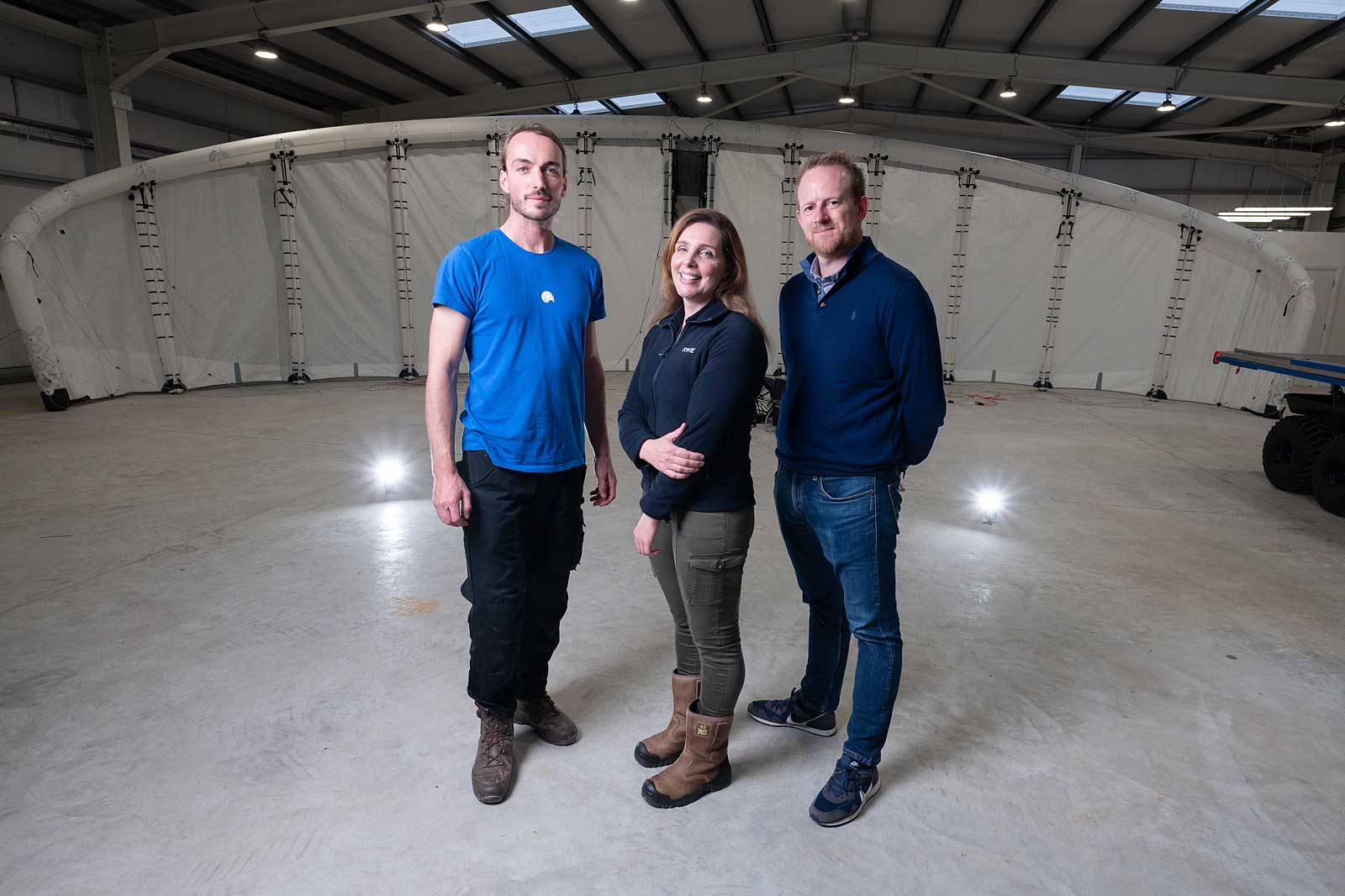- Innovative technology begins first flight in County Mayo, Ireland
- RWE’s test facility first of its kind in Europe
- The project is in collaboration with technology from Kitepower partners Mayo County Council and funding from Interreg North West Europe
Mayo, Ireland, 25. September 2023
RWE, a world leader in renewable power generation put its new innovative Airborne wind test facility in Ireland to work for the first time, enabling the maiden flight of a new kite technology by Kitepower in Bangor Erris, County Mayo, Ireland.
RWE is committed to exploring and supporting industry innovation and technological advances across all fields of wind power. Airborne Wind Energy is a new type of wind energy technology that RWE is testing in Ireland in collaboration with its technology partner Kitepower, its partners in Mayo County Council and the MegaAwe Project, with funding from Interreg North West Europe.
The site in Bangor Erris was chosen after an extensive global search for a suitable location to develop this technology. The site received planning permission earlier this year to allow the Kitepower device to fly.
Cathal Hennessy, Head of Onshore Renewables Development (Wind, Solar and Storage) UK & Ireland said: “We are delighted that RWE is helping to develop this new wind energy technology with our partner Kitepower. RWE is exploring many different industry innovations to see whether airborne wind technology could complement our existing renewables portfolio of offshore and onshore wind, solar energy and battery storage. With low capital expenditure and fewer materials, Airborne Wind has the potential to play a role in helping to drive down the cost of energy further. It will use winds at higher altitudes which are stronger, steadier, and more constant. It can be used onshore as well as offshore and in combination with other technologies such as solar electricity generation.”
Johannes Peschel, CEO Kitepower, added “Kitepower, as the name suggests, uses a large kite structure with a hybrid inflatable and fixed fibreglass skeleton to hold the kite open. It has a wingspan of 60 square meters and weighs only 80kg, including the Kite Control and sensor unit. We will test our Kitepower Falcon system in Bangor Erris, which can generate up to 100kW. The Kite will initially be flown at up to 350m altitude and over the coming months could be tested to fly at greater heights. The dedicated test hub in Bangor Erris is the first of its kind and will help us further accelerate the development of our system. We are extremely proud that we have been able to contribute to the realization of this test hub and are committed to adding this new class of renewables to our global energy mix in the near future.”
Kitepower uses a Kite Control Unit (KCU) attached to the tether, to control the direction the kite flies. The Dyneema tether (an ultra-strong rope which has a higher strength than steel wire of the same dimension but less than one tenth of its weight) is attached to a Ground Station, housed in a conventional 20 foot container. The ground station has a generator which converts the mechanical energy of the kite into electricity.
Electricity is produced in the “Reel Out Phase” when the kite is flown in a cross-wind figure of eight pattern achieving a high pulling force which pulls out the tether from the winch in the ground station. During this Reel Out Phase, the Kitepower “Falcon” produces electricity. When the tether reaches its maximum, the kite is directed back to directly above the ground station by the KCU and the tether is reeled in using a small amount of energy. This is known as the “Reel In Phase”. When the Reel in Phase is complete, the Reel Out Phase begins again. Normally these two phases take 100 seconds, 80 seconds for Reel Out and 20 seconds for Reel In.
RWE has established itself as a key player in the Irish energy market with an expanding portfolio of projects in development and operation, operational since 2016, the company has two offices, one in Kilkenny City and one in Dún Laoghaire, Co Dublin.
RWE has one onshore wind farm in Kerry and two battery storage facilities, in Monaghan and Dublin. RWE’s objective for Ireland is to grow its renewable energy business, where RWE will be a long-term energy partner for Ireland during the country’s energy transition to 2030 and beyond. RWE has over 2 gigawatts (GW) of projects in development, comprising two offshore wind farms (1,750MW) and ten onshore wind farms (520MW) incorporating hybrid technologies.


